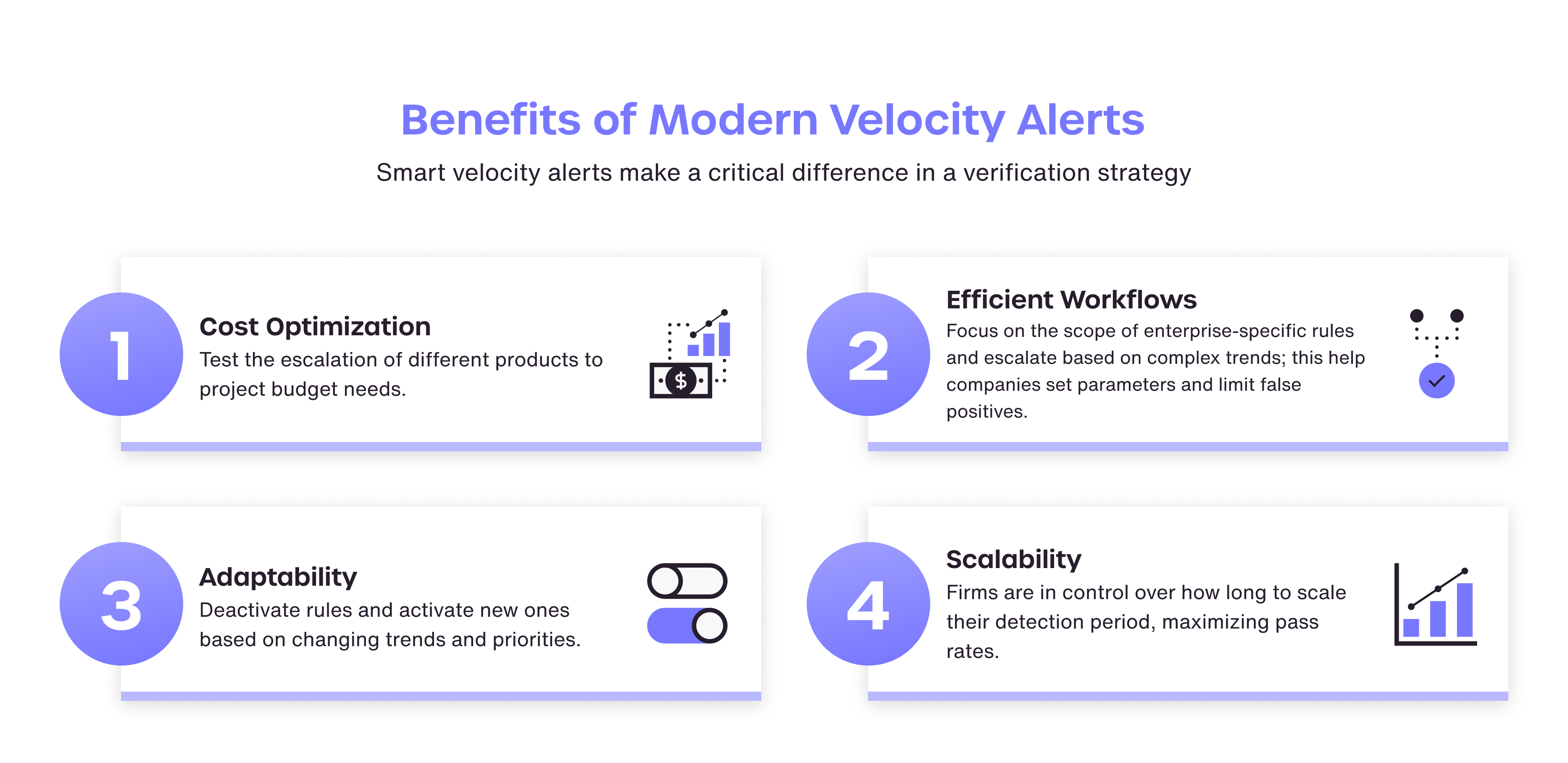Why velocity alerts are key in the fight against fraud
As consumers and fraudsters continue to embrace the digital landscape, businesses must look for ways to efficiently deter risk through a comprehensive verification workflow without introducing unnecessary friction. Forty-six percent of consumers surveyed in GBG’s Global State of Digital Identity signed up for a bank account in 2023. The same report found that 1 in 7 consumers said they had been a victim of fraud in 2023, and over half of businesses experienced known or suspected fraud attempts in the same period. The clear upward trend in fraud shows a need for enhanced onboarding due diligence prior to granting account access.
By layering velocity alerts into their fraud prevention strategy, businesses can find and alert on instances of repeat customer interaction. This approach can provide a distinct competitive advantage by ensuring businesses are monitoring potential fraud with the right attributes.
What is Velocity?
Velocity alerts are based on rules that an institution can set internally to track specific trends they know to be suspicious. Real-time velocity alerts are designed to monitor a specific set of data elements that businesses can determine. These alerts track the rate of occurrence or repetition of these elements and can be set to cast a wide net or focus on specific, granular activity. By pairing internal intelligence with expert guidance from fraud experts, businesses can effectively monitor for potentially abnormal behavior.
Velocity alerts can rely on known fraud attributes detected in the past but also allow for customization of those attributes that may indicate a new trend. Firms can receive real-time notifications on high-risk activity, empowering them to make decisions that keep them ahead of trending fraud. For example, fraud rings using centralized data points such as a common address or phone number can be detected and prevented with velocity monitoring.
With accurate velocity alerts, institutions can gain visibility into fraud patterns and monitor high-velocity attempts. Institutions can then set limit-specific attributes associated with known frauds, such as synthetic identity fraud (SIF), which has recently ranked among the fastest-growing financial crimes worldwide.
Estimate the Potential Impact of Velocity
Before implementing a velocity rule in an enterprise, it’s important to understand its impact. A modern velocity solution allows companies to simulate a given use case and evaluate the impact of new velocity rules before enabling them. This valuable tool empowers firms to take greater control in their fight against fraud.
To estimate the potential impact of a velocity rule, businesses can leverage their recent enterprise data. The total number of aggregated velocity hits in a given time and frequency can be used to watch for suspicious trends and catch fraudulent activities. The data generated by velocity hits can in turn inform different ways to protect workflows, from implementing rules designed to monitor typical hours of fraud activity as well as monitors for specific combinations of data points to pinpoint fraud vectors.
Utilize velocity to unlock modern benefits
Robust data-driven analysis can help firms hone their velocity monitors to actively target fraud without slowing down legitimate consumers.

Better fraud tools for better results
Real-time alerts can be a key tool in preventing fraud, but the real strength comes when an institution can pair something like Velocity Alerts with cross-industry intel and dedicated fraud analysts.
Combining real-time alerts with additional fraud tools like human-supervised AI and advanced biometrics allows for a more accurate picture of your customers. A layered approach can empower institutions to prevent synthetic identity fraud, protect against identity theft and minimize other fraud threats.
Achieve better success rates by analyzing the impact of new velocity rules and ensuring they fit a given risk threshold. By adopting this data-driven approach, you can drive better outcomes and ensure that each new velocity rule meets your specific business needs.
Learn more about how businesses can gain an edge in the fight against fraud with our whitepaper: Unlock Opportunity and Mitigate Risk.
